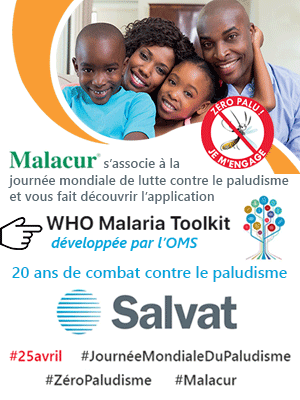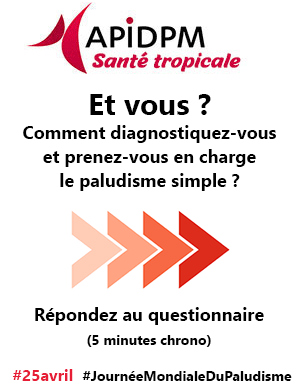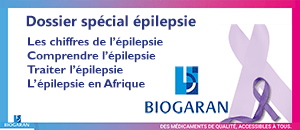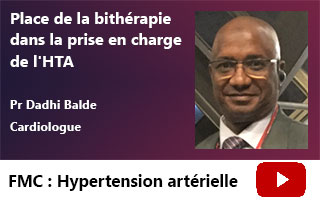← retour Santé tropicale
Accès aux sites pays ![]()
![]() BENIN
BENIN![]() BURKINA FASO
BURKINA FASO![]() CAMEROUN
CAMEROUN![]() CENTRAFRIQUE
CENTRAFRIQUE![]() CONGO
CONGO![]() COTE D'IVOIRE
COTE D'IVOIRE![]() GABON
GABON
![]() GUINEE
GUINEE![]() MADAGASCAR
MADAGASCAR![]() MALI
MALI![]() R.D. CONGO
R.D. CONGO![]() SENEGAL
SENEGAL![]() TOGO
TOGO
← retour Santé tropicale
Accès aux sites pays ![]()
![]() BENIN
BENIN![]() BURKINA FASO
BURKINA FASO![]() CAMEROUN
CAMEROUN![]() CENTRAFRIQUE
CENTRAFRIQUE![]() CONGO
CONGO![]() COTE D'IVOIRE
COTE D'IVOIRE![]() GABON
GABON
![]() GUINEE
GUINEE![]() MADAGASCAR
MADAGASCAR![]() MALI
MALI![]() R.D. CONGO
R.D. CONGO![]() SENEGAL
SENEGAL![]() TOGO
TOGO

Publié dans Médecine d'Afrique Noire 6007 - Juillet 2013 - 309-317
 Rôle des comités sectoriels de lutte contre le VIH/SIDA (CSLS) dans la prévention du VIH/SIDA par la mise en œuvre du plan stratégique national de lutte (PSNL) 2006-2010 dans le secteur public en Côte d’Ivoire de 2006 à 2009
Rôle des comités sectoriels de lutte contre le VIH/SIDA (CSLS) dans la prévention du VIH/SIDA par la mise en œuvre du plan stratégique national de lutte (PSNL) 2006-2010 dans le secteur public en Côte d’Ivoire de 2006 à 2009Auteurs : A.F. Tchicaya, S.B. Wognin, A. Ina, C.P. Guiegui, D.R. Bodjo bodjo, J.S. Bonny - Côte d'Ivoire
Le VIH/SIDA n'épargne pas le monde du travail et serait alors responsable d'un appauvrissement accru des travailleurs et des employeurs.
Objectif : Apprécier le niveau d'application du plan stratégique national de lutte contre le VIH-SIDA dans le secteur public.
Méthodes : L’étude était transversale, prospective à visée descriptive. Trente comités sectoriels (94%) ont été sélectionnés. L'ancienneté variait de 1 à 7. Tous les comités connaissaient la multi-sectorialité de la lutte contre le VIH/SIDA ; 90% des CSLS ont mené des activités de prévention et 90% ont bénéficié de l'aide de l'Etat. Le suivi-évaluation des activités a été réalisé par 1 CSLS (3,34%). Les activités de prévention du VIH/SIDA reposant sur le port du préservatif et le changement de comportement ont été menées par 90% et 25 83,33% des CSLS respectivement ; aucun comité sectoriel n'a réalisé toutes les activités de prévention selon le PSN VIH/SIDA 2006-2010. La prévention par le port de préservatif et la communication pour le changement de comportement constituaient les principales activités ; 60% des comités ont cumulées ces activités. Les soins palliatifs, la prise en charge des orphelins et enfants vulnérables, le traitement ARV et des infections opportunistes ont été réalisées par 10 CSLS (33,34%), 2 comités sectoriels (6%) ont associé ces activités. Le suivi-évaluation a été réalisé par un CSLS.
Conclusion : L'application du PSN reste insuffisante. Le financement devrait être renforcé pour relever ce niveau d'application par un plaidoyer.
The HIV/AIDS does not spare the workers and then would be responsible for a greater impoverishment of the workers and for the employers.
Objective: To estimate the level of application of the national strategic plan of fight against the HIV-AIDS in the public sector.
Method: The study was transverse, forward-looking in descriptive aim. Thirty sectorial committees (94%) were selected. The age varied from 1 to 7. All the committees knew the multisectoriality of the fight against the HIV/AIDS ; 90% of the CSLS led activities of prevention and 90% benefited from the help (assistant) of the State. The follow-up-evaluation of the activities was realized by one sectorial committee of fight against AIDS (3,34%). The activities of prevention of the HIV/AIDS basing on the bearing of the condom and the change of behavior were led by 90% and 25 83,33% of the sectorial committee of fight against AIDS respectively ; no sectorial committee realized all the activities of prevention according to the PSN HIV/AIDS 2006-2010. The prevention by the port of condom and the communication for the change of behavior established the main activities; 60% of committees accumulated these activities. The palliative care, the coverage of the orphans and the vulnerable children, the treatment ARV and the opportunist infections were realized by 10 sectorial committees of fight against AIDS (33, 34%), 2 sectorial committees (6%) associated these activities. The follow-up-evaluation was realized by a sectorial committee of fight against AIDS.
Conclusion: The application of the PSN remains insufficient. The financing should be strengthened to raise this level of application by a plea.
Cet article est actuellement coté ![]() (2,0 étoiles) par les abonnés de Médecine d'Afrique Noire.
(2,0 étoiles) par les abonnés de Médecine d'Afrique Noire.
Il a été consulté 2892 fois, téléchargé 63 fois et évalué 2 fois.
Aucun commentaire n'a encore été ajouté à propos de cet article
Restez informés : recevez, chaque mercredi, la lettre d'informations de Santé tropicale. Inscriptions
Ce contenu gratuit vous est destiné :









![]() Adresse
Adresse
![]() Téléphone
Téléphone
![]() Contactez-nous
Contactez-nous
Actualités
Articles médicaux